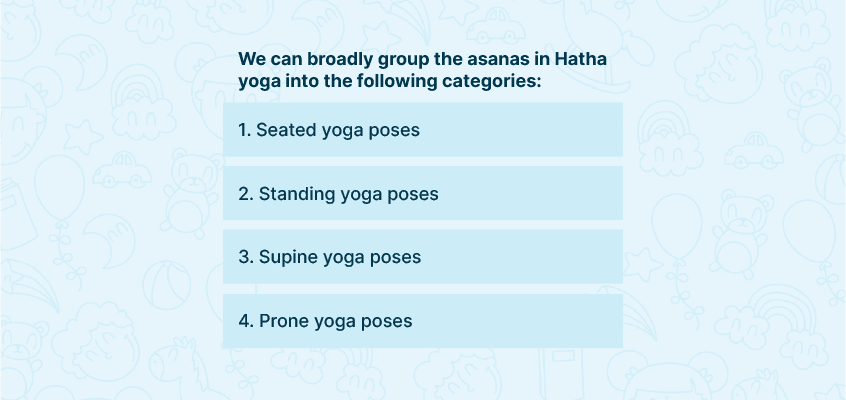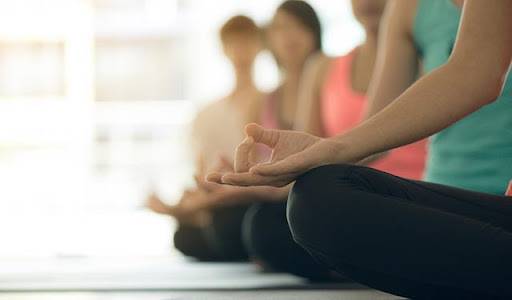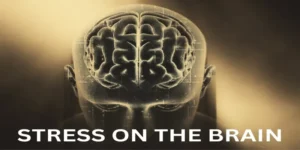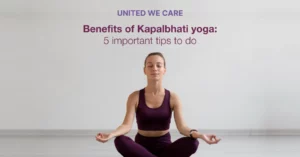Introduction
Yoga is the union of the mind, body, and spirit. It helps establish a connection with one’s inner self. The practice of yoga includes stretching and balancing techniques, breathing, meditation, and focusing on centring one’s mind and spirit. Let’s delve a bit deeper into the practice of Hatha Yoga in this article!
Our Wellness Programs
What Is Hatha Yoga?
Hatha is a Sanskrit word derived from ‘Ha’, meaning the sun, and ‘the’, meaning the moon. The practise of Hatha yoga involves a set of physical postures and breathing techniques that help balance the forces of the universe derived from the sun and moon, which is the most popular form of yoga. In many western countries, Hatha yoga is solely referred to as ‘yoga’ and includes other forms of yoga.

Hatha yoga is a great way to begin your yoga journey. It is a slower style of yoga and has a classic approach to techniques and exercise. The exercise you may perform as part of Hatha yoga include:
- Asanas or yoga postures/poses
- Pranayama (breathing technique)
- Mantra (chanting or reciting)
- Mudra (hand gestures)
- Shat Kriyas (cleansing techniques)
- Visualisations
Looking for services related to this subject? Get in touch with these experts today!!
Experts

Banani Das Dhar

India
Wellness Expert
Experience: 7 years

Shivani Kudva

India
Wellness Expert
Experience: 3 years

Shariha

India
Psychologist
Experience: 8 years

Preethi Jain

India
Psychologist
Experience: 15 years

Devika Gupta

India
Wellness Expert
Experience: 4 years

Trupti Rakesh valotia

India
Wellness Expert
Experience: 3 years
What Are the Types of Asanas in Hatha Yoga?
There are over 84 asanas, or yoga poses in Hatha yoga. Some popular ones are:
- Vrikshasana (Tree pose)
- Tadasana (Mountain Pose)
- Paschimottanasana (Seated forward bend pose)
- Sethu Bandhasana (Bridge pose)
- Sirsasana (Headstand)
- Matsyasana (Fish Pose)
- Trikonasana (Triangle pose)
We can broadly group the asanas in Hatha yoga into the following categories:
- Seated yoga poses
- Standing yoga poses
- Supine yoga poses
- Prone yoga poses
Depending on the posture types, the asanas can be:
- Backbending poses
- Balancing poses
- Core strength poses
- Forward bending poses
- Hip-opening poses
- Twisting poses
- Side-bending poses
Different Effects of Asanas and Their Benefits in Hatha Yoga
Here are the effects and health benefits of some common Hatha yoga asanas:
1. Vrikshasana (Tree pose)
It helps improve balance in the body, strengthens the ligaments, muscles, and tendons on the legs and feet, tones the glutes and hip bones, and improves concentration.
2. Tadasana (Mountain Pose)
It strengthens the lower half of the body, improves posture, boosts circulation, and releases any pent-up tension from the body. This pose is beneficial for increasing lung capacity increasing the overall energy levels.
3. Paschimottanasana (Seated forward bend pose)
Paschimottanasana is great for stretching the body’s muscles, improving flexibility, and helping patients with diabetes and hypertension.
4. Sethu Bandhasana (Bridge pose)
It helps stretch the back, spine, and neck and relieves aches and pains in these regions. This asana also provides stress relief, calms nerves, and reduces depression and insomnia.
5. Sirsasana (Headstand)
A headstand or the sirsasana increases oxygen and transmits blood rich in nutrients to the head, scalp, and face. It also reduces hair fall, stress, depression, and anxiety, detoxifies the adrenals, strengthens the core muscles, and reduces the risk of strokes.
6. Matsyasana (Fish Pose)
It helps relieve thyroid disorders, regain balance, and increase spine flexibility. This pose helps relieve constipation and menstrual pain.
7. Trikonasana (Triangle Pose)
This pose effectively tones legs, lowers stress levels, maintains balance, and increases physical equilibrium. Regular practice helps strengthen the knees, ankles, legs, arms, and chest and opens the hamstrings, groin, hips, and spine.
What Are the Benefits of Practising Hatha Yoga?
Irrespective of style, Yoga aims to improve one’s strength, flexibility, and balance. Additionally, each type of yoga may also provide aerobic conditioning to the body. Some benefits of practising Hatha yoga include:
1. Improves sleep
Hatha yoga improves sleep duration and sleeps quality. For all those experiencing insomnia, try Hatha yoga to enjoy a good night’s sleep and wake up refreshed every morning.
2. Reduces stress
Yoga is a form of exercise, and just like with any other activity, practising Hatha yoga helps lower cortisol levels (released during stressful situations). Hatha yoga is effective for people who wish to bust their chronic stress.
3. Improves balance and core strength
All forms of yoga, including Hatha yoga, help improve balance and core strength, which is vital for all age groups.
4. Relieves neck and back pain
Yoga, especially Hatha yoga, is excellent for relieving back and neck pain as it improves posture and strengthens the core and back muscles. Regular practise of this style of yoga also helps rectify the postural and spinal imbalance.
5. Improves flexibility
Practising Hatha yoga improves spinal and hamstring flexibility, especially in older adults. The combination of poses and mudras helps increase and maintain the range of movement of various joints in the body and improves the flexibility of muscles.
6. Improves mindfulness
Apart from physical and mental strength, Hatha yoga works to improve mindfulness. Most people practising Hatha yoga feel refreshed and motivated to engage in physical activities and live healthier lives.
Tips for Practising Asanas/Poses in Hatha Yoga
We must go Yoga asanas correctly to ensure one benefits from them. Here are some valuable tips for practising asanas correctly:
- Wear comfortable clothing while performing asanas.
- Use a non-slip yoga mat or perform yoga on a safe, anti-slip floor.
- Keep yourself hydrated.
- Always breathe through your nose while performing the asanas, unless mentioned otherwise.
- Respect your body’s limits and be patient as results take time.
- Add meditation to your yoga routine.
Conclusion
Though most styles of yoga focus on asanas and other techniques, yoga are more of a way of life. Embark on your yoga journey and witness its attractive benefits on your life and overall well-being. Find more information on yoga and its various techniques and principles on United We Care’s online Yoga Portal!



 Conflict Management in Relationships
Conflict Management in Relationships
 Healing from Heartbreak
Healing from Heartbreak Coping With Anxiety
Coping With Anxiety Get Started With Mindfulness
Get Started With Mindfulness Healing With Meditation
Healing With Meditation Anger Management
Anger Management







